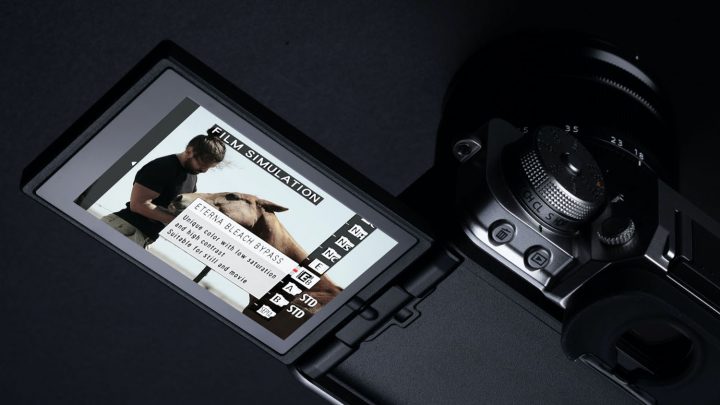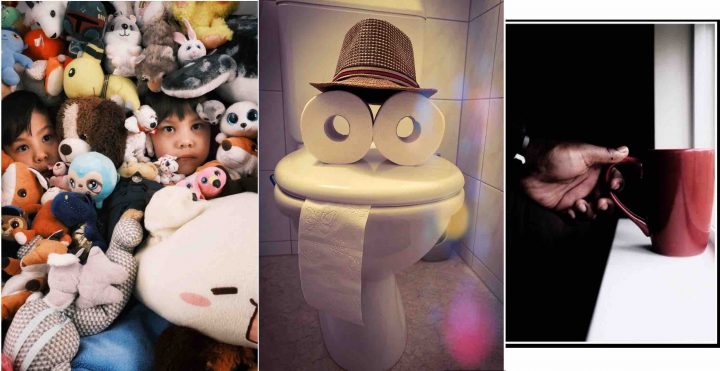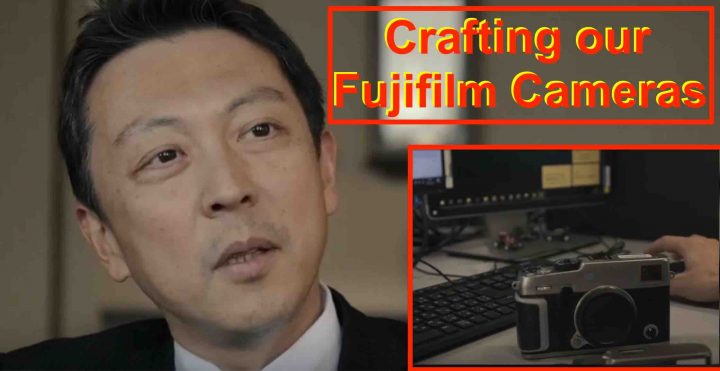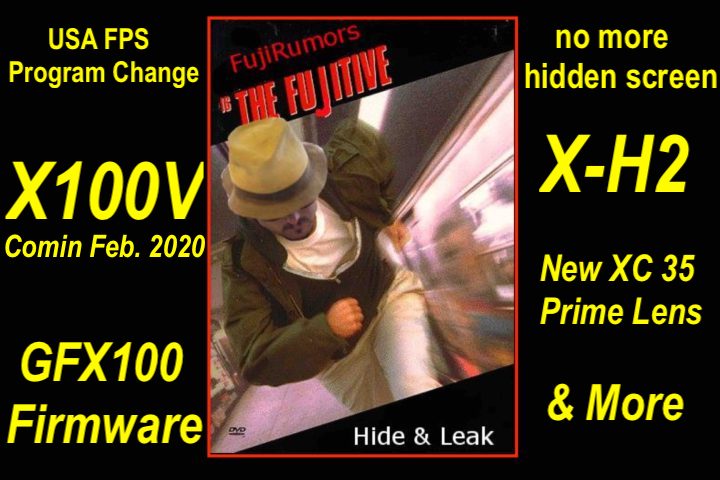Tales of the Fujifilm X-T4 Part 3 – Eterna Bleach Bypass

Fujifilm published part 3 of their “Tales of the Fujifilm X-T4” series.
Part 3 is all about the new Eterna Bleach Bypass film simulation. Here is what they say:

Fujifilm published part 3 of their “Tales of the Fujifilm X-T4” series.
Part 3 is all about the new Eterna Bleach Bypass film simulation. Here is what they say:

I read somewhere, that about 4 billion people are forced to stay at home now to slow down and hopefully stop the spread of the COVID-19 Coronavirus.
In my country, the stunning Dolomites in Italy, we are locked in since over 1 month now. Of course I strictly follow the rules and never leave my apartment, except to buy food 1 or 2 times a week, and to quickly bring out my old dog in the fields just under my home.
Teaching Online
I continue to teach. Just online! With live streaming lessons, videos I upload on youtube [does this qualify me as a vlogger now??? ;) ], material I send to students via email and more. I try to do my best.
But the more I do it, the more I miss it to enter a classroom, write on a blackboard, smell the chalk, but most importantly, interact with my students.
But hey, these days there are people, who live far bigger challenges than me. So no complaint here. Just a wish that everything goes back to normal soon.
Lockdown Photography
The first weeks all went into figuring out how to do this online teaching. Trying different platforms for online live lessons, adapt my material to make it online teaching fit, figure out how to reach the various students best (some have only a smartphone, no computer, no printer, etc), and more practical issues to sort out.
But now that I have some sort of workflow, I can start thinking at my lockdown photography.
In my small rented apartment, I am running out of subjects rather quickly.
What I did now, is I started to take out my Fujinon XF55-200 lens, a lens I hardly use anymore since I own the Fujinon XF18-135mm (which never stops to surprise me, as you can see here).
The goal?
Get a decent shot of the little birds flying around my balcony, and the XF55-200 is the best lens in my arsenal for that. So it gets its revival now!
So far I have failed, though, not for the limits of the gear, but because of my lack of skills. But I have time to practice, improve, and I will upload an image on my instagram if I get a decent shot.
Inspiration
Another thing I like to do, is to check out all our facebook groups, and see how other fellow Fujifilm X and GFX shooters deal with these lockdown days and what they shoot.
I have picked out some images and shared them below. May them motivate you (and me) to stand up, and do the best out of this situation, also photographically speaking.
I have been contacted, asking to take position on a “rumor” shared by Ken on youtube.
The “rumor” says “Fujifilm is talking about monochrome”.
Now, I hate to be the one that takes away the hype, but just be careful.
Fujifilm has regular meetings, and “talks” just about everything.
In fact, I hear these monochrome “talks” since at least half a decade now.
For example, a Fujifilm manager publicly said back in 2016, that they thought about developing a monochrome camera.
Not only. Fujifilm talks about monochrome and much more. Ideas, concepts and what not. Some become real, others not, others change.
So, take a grain of salt. At the end it’s the same source, who said about the Samsung 28MP Fujifilm X-T3 sensor… so be careful with some rumors.
What we want to know, is if Fujifilm decided to make a monochrome camera.
And looking at the survey below, you guys would love to see a monochrome camera.

Fujifilm X Photographer Mindi Tan created a 90 minuted documentary, giving us a behind the scenes to the secret process behind the Fujfilm X-Pro3 creation.
It gives us a very close and also intimate look at Fujifilm’s camera creators and managers. The documentary reveals its team dynamics, beliefs and history inside the company with lots of exclusive interviews and footage.
It also features nine popular X-Photographers from all over the world who open up in their home environments to discuss what being a photographer and being connected with Fujifilm means today.
Down below you can find a summary of the video, but before that, I’d like to leave you with quick impressions I had.
It’s clear to see from the documentary, that behind our beloved Fujifilm cameras, there are not cold managers thinking at specs and profits, but really passionate photographers in the first place.
In fact, top manager’s Toshi Ilda first hobby was photography, and when his father asked him, what he wishes for his successful graduation, he said he’d like a camera.
Also, another top manager, Takeshi Ueno, deeply loves film photography, and straight out says he does not like digital cameras.
I guess this passion for the good old photography reflects perfectly in the vintage design and controls of Fujifilm cameras.
However, it comes even more surprising, that Fujifilm completely denied this “manual” DNA on the Fujifilm GFX100, which is the first Fujifilm camera I ever hold in my hands, that was not intuitive (for me) to operate, and required a look in the manual, to understand how it works.
I am sure there will be many, who love the more “modern” layout of the Fujifilm GFX100, and that’s perfect. I can understand. But it’s just not my style, not my preference.
I think Fujifilm should continue to offer what makes them unique, and part of that is not to give up vintage controls. And with the X-Pro3, they pushed this concept to its limits, by even hiding the LCD.
Also interesting:
They say the X-Pro3 is not a product of “logic”, but of instinct. In this case they did not listen to what the market dictates, but their intuition, that it was the right thing to do with the X-Pro3.
And that’s why I love Fujifilm.
If they would be like Sony for example, and just listen to market logic, Fujifilm would just offer one camera body. The same for everybody.
But Fujifilm knows photographers are not all the same, and so they offer niche products, that will never really become that profitable. By doing so, Fujifilm honors its photographic culture and heritage, it’s photo-DNA.
It’s a very lovely documentary, that I invite everybody to watch.
In theory, this is the last day of Fujifilm X and GFX deals. I say in theory, as lately Fujifilm (and all other manufacturers), just keep up chronically discounting all their gear. See for example:
The drastically shrinking camera market triggered a battle for survivor, which is surely stressful for companies, but it’s mostly good for us customers, as this competition gives us innovation and the latest and greatest at a cheaper price than ever.
There is a downside, though, also for customers, as this inevitably means that our lovely gear loses value faster.
But if you were looking at your gear as an “investment“, then here is a tip: electronic goods are never good for that. You don’t even have time to unbox your brand new gear at home, that it already lost value.
Is there a thing in life that has only Pros? Well, let me know if there is, because I still haven’t found it. And so it is in the case of the deals. We can decide to be annoyed by the Cons, or just try to enjoy the Pros of it.
With that said, down below is the full list of deals, that will end on January 5th, but in some shape or form will come back surely later this year.
GFX Deals
X Camera Deals
*Note that the X-H1 is discontinued in many stores
XF Prime Lenses
XF Zoom Lenses
General Deal Pages
All Fujifilm Deals
Used Fujifilm Gear
SD-Cards
Power Banks
Fujifilm decided to extend the deals on Fujifilm X and GFX gear until January 5, 2020.
Check out down below the updated list of deals.
GFX Deals
X Camera Deals
*Note that the X-H1 is discontinued in many stores
XF Prime Lenses
XF Zoom Lenses
General Deal Pages
All Fujifilm Deals
Used Fujifilm Gear
SD-Cards
Power Banks

As you know, I am a teacher, and usually it’s me, who has to judge and give votes to others.
But not today, as it’s time for our yearly 2019 rumors check, and to see if I did my homework well or not.
Also, there will be an accuracy rating of those rumors, that still could not be verified.
Keep in mind, there could be further rumors before the end of the year, in which case I will update this list!
Ready? Cool, so let’s start,
But be warned: I will be incredible severe to myself, as I will include in the wrong rumor section, rumors that were actually correct at the time of sharing, but just turned out wrong because Fujifilm changed plans.
It’s the case for example of the new lens roadmaps. In fact, just a few days after our rumor, top Fujifilm manager confirmed here, that indeed there would have been new roadmaps in 2019, but 2019 is now ending, and nothing came. So I was wrong, but so was the top Fujifilm manager.
Follow FujiRumors on Facebook, Flipboard, RSS-feed, Twitter, Youtube and Instagram
Here is roundup about Fujifilm and general photography accessories.
Fujifilm changed again their current X/GFX savings. Here is what’s new:
The rest remains the same, and you can check it all out down in this dedicated X/GFX deal page and also down below.
MITAKON DEALS
EUROPE: EU readers get a massive dual cashback rebate on X gear. Check out all details here.
Dedicated Pre Black Friday deal pages:
USA / CA BLACK FRIDAY PAGES
EU BLACK FRIDAY PAGES
X Camera Deals
XF Prime Lenses
XF Zoom Lenses
GFX Deals
Laowa Holiday Savings
Laowa has launched its holiday savings. You can check out the discounted lenses at VenusOptics here and BHphoto here.
Amazon Special Deals
You can combine the official Fujifilm deals with the extra 15% discount offered by AmazonUS via Prime Card Deals on the following Fujifilm products:
It’s Black Friday time, and Fujiflm EU has decided to push their Fujifilm X-T3, X-T30 and X-Pro2 deals even further, by offering a double cashback.
So you can get it all now for ridiculous prices:
Europe Black Friday Deal Pages – Live Now!
Pre Black Friday deal pages:
USA / CA Black Friday Pages
Until November 29 you can save up to 70% on Adobe Creative Cloud.